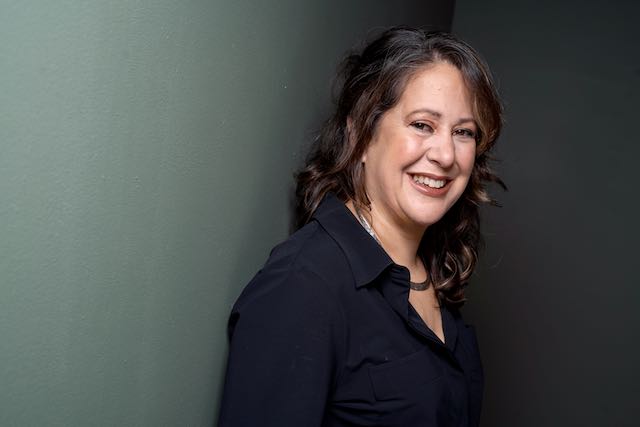Paula Redes Sidore is best known for her work communicating the wines of Germany although, as Amanda Barnes discovers in this interview, her journey in wine started with a few inconspicuous drops of White Zin. Paula also shares what wines and styles are enticing her at the moment, and why she decided to launch TRINK —the world’s first English-language magazine focused on the ‘German-speaking wines’ of Austria, Germany, Italy, and Switzerland. Circle Members are eligible for 20% discount off the Explorer Subscription of TRINK (see Members Benefits.)
What’s your earliest memory in wine?
That would be a Sunday dinner when I was about eight or nine. Mom probably had White Zin; Dad had red (likely Italian). I watched the way it seemed to induce contemplation and seriousness, and some sort of shared experience. It seemed a rite of passage that I decided I wanted to share as well. I asked for a glass and they gave me my own, with little more than a few drops in the base. I hated it of course, but kept after it every Sunday thereafter for many years to come.
Are there any moments in your early career that really set the path for your future in wine?
I took a summer job in the tasting room at Horton Vineyards, in Virginia, while I was getting my MFA (Master of Fine Arts). Mornings were slow and so I picked up the closest book and started reading; it was the Oxford Encyclopedia of Wine. I read the entries alphabetically and would use my lunch break to get the winemaker to answer my questions. By the summer’s end, I was leading tasting groups and dinners.
You have dedicated much time to communicating about German wine and, in particular, to making it a bit easier to understand for non-Germans. What do you think are the challenges that remain in communicating German wine to an international audience?
Perhaps the biggest problem is undoing the poor communication, and quality, of the 70s and 80s. At the time, Germany was one of the only European countries allowed to include the wine variety on the label. As such, people came to associate Riesling with everything German, good and bad, sweet and dry. It sometimes feels like there’s as much work ‘unlearning’ those challenging decades as there is communicating the range of thrilling and dynamic developments in German wine today.
What do you think are the most exciting trends in German wine right now?
There’s a beautiful intersection between vine maturity, with much of the replanting and newly allowed varieties from the 1970s now coming in on 50+ years of age; experience abroad; and a cadre of pioneers in dry wine passing on their knowledge to the rising generation. Whether it’s thrilling Pinots, complex Silvaner, or gorgeous Sekts, there’s a healthy mix of curiosity, focus and respect that is an honor to witness.
Tell us about TRINK and why you decided to found a new publication…
When I was studying for my sommelier exam, I found myself frustrated by the large divide between what I was seeing, when living and working in Germany, and what I was reading in English. It felt like most of the information available was at least 10 years behind what I was seeing. I started translating professionally shortly thereafter, as a way to bridge the gap.
Then in 2019, I met my co-founder Valerie Kathawala. Although she was living in the USA, she shared the same frustration at the divide between what was happening and what was being reported. Over the course of our correspondence, we decided to do what we could to build our own ‘bridge.’ And that bridge is named TRINK Magazine. TRINK is is an independent quarterly digital publication exploring the ‘German-speaking wines’ of Austria, Germany, Italy, and Switzerland. Because I chose words first and wine second, story, voice and place is at the core of what makes TRINK tick.
From the outset, our mission has been to deepen the understanding of how wine intersects with and impacts the narrative, culture, history, and geography of the European spaces where German is common cultural currency. With one foot in NYC and one in Bonn, we have the freedom to dig deep and uncover insider intel on new producers and fresh perspectives on icons, through classic reporting and interviews, thought pieces and long-form essays, as well as cultural criticism, reviews, short fiction and poetry.
What are the other wine regions, beyond Germany, that particularly interest you, and why?
For a long time, I was fascinated by the transparency and individuality of Alpine wines. They struck me as crisper, brighter, and more radiant. Recently, however, I’ve been casting an eye, and a glass, towards Loire and Austria as well. There’s a balance and unity in Chenin Blanc in particular that defies being pulled apart for a tasting note. It’s a quieter, less dramatic approach, but one that resonates. These wines need time: time in the bottle, time in the glass, time at the table. They are wines to contemplate.
I’m at my happiest when the wine in my glass is simply one part of a much larger journey; and the story is not the wine itself, but how the people, the place, the fruit got there at all.

